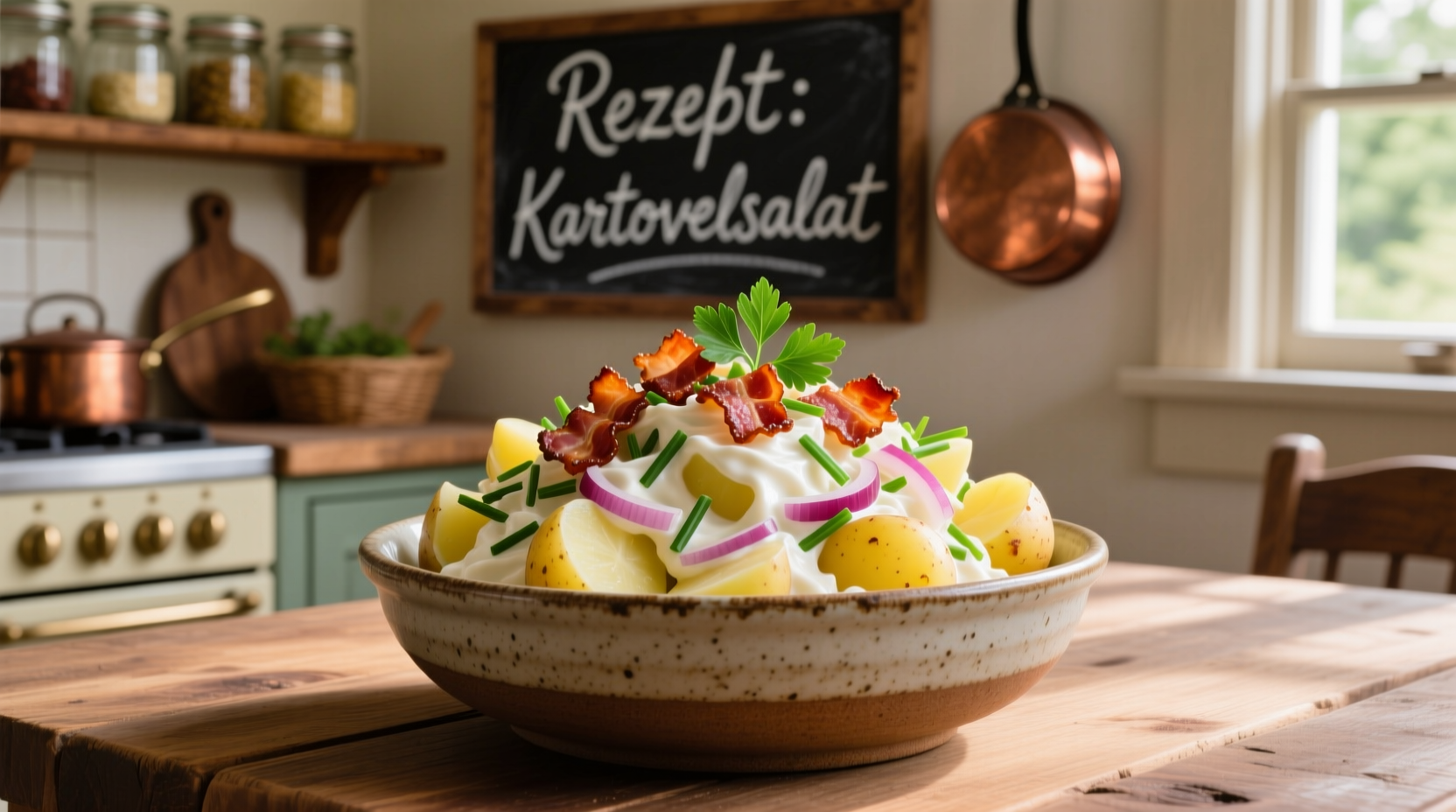Nothing says summer gathering or family picnic quite like a perfect bowl of potato salad. Yet many home cooks struggle with common pitfalls: mushy potatoes, broken dressing, or bland flavor that leaves guests reaching for the salt shaker. The secret isn't just ingredients—it's understanding potato science, dressing emulsion principles, and timing that transforms this classic side from ordinary to extraordinary.
The Science Behind Perfect Potato Salad
Professional chefs know that successful potato salad starts long before mixing ingredients. Potatoes contain two starch types: amylose (which makes dishes gluey) and amylopectin (which provides structure). Waxy varieties like Yukon Gold or red potatoes have higher amylopectin content, maintaining shape during cooking while absorbing dressing without becoming waterlogged—a critical factor confirmed by USDA agricultural research on potato composition.
| Potato Type | Best For | Cooking Time | Dressing Absorption |
|---|---|---|---|
| Yukon Gold | Creamy American style | 15-18 minutes | ★★★★☆ |
| Red Potatoes | German-style salad | 18-20 minutes | ★★★☆☆ |
| Russet | Avoid for salad | 20-25 minutes | ★★★★★ (too much) |
Step-by-Step Preparation Guide
Proper potato cooking technique makes or breaks your salad. Always start potatoes in cold, salted water (1 tablespoon per gallon) to ensure even cooking from center to edge. Test for doneness at 15 minutes—you want potatoes tender enough for a knife to slide in with slight resistance, not completely soft. This prevents overcooking during the crucial cooling phase.
Dressing emulsion mastery separates good potato salad from great. Combine mayonnaise, mustard, and vinegar first before adding to potatoes. The acid in vinegar helps stabilize the emulsion, preventing separation—a principle documented in Cornell University's food science program. For German-style potato salad, use a warm bacon dressing poured over still-warm potatoes to absorb maximum flavor.

Avoid These 3 Common Mistakes
Mistake #1: Adding dressing to hot potatoes—this causes mayonnaise to break and potatoes to continue cooking, becoming mushy. Wait until potatoes reach room temperature (about 30 minutes) before dressing.
Mistake #2: Overmixing after dressing—gently fold ingredients with a rubber spatula just until combined. Excessive stirring damages potato structure. Professional test kitchens measure optimal folding at 12-15 turns for best texture.
Mistake #3: Skipping the resting period—refrigerate for at least 2 hours before serving. This allows flavors to meld and dressing to fully absorb, transforming good potato salad into exceptional. Make-ahead preparation actually improves quality, unlike many fresh dishes.
Regional Variations Worth Trying
Potato salad's journey from European courts to American picnic tables reveals fascinating regional adaptations. German potato salad (Kartoffelsalat), documented in 18th century Bavarian cookbooks, features vinegar-based dressing with bacon, while American versions evolved with mayonnaise after its commercial availability in the 1920s. The Southern U.S. variation often includes hard-boiled eggs and sweet pickles, reflecting regional taste preferences.
For dietary adaptations, try these proven substitutions:
- Dairy-free option: Use silken tofu blended with lemon juice instead of mayonnaise
- Lighter version: Replace half the mayo with Greek yogurt (stabilized with 1 tsp cornstarch)
- Vegan alternative: Whisk together 1 cup cooked white beans, 2 tbsp apple cider vinegar, and 3 tbsp olive oil
Storage and Serving Secrets
Potato salad maintains peak quality for 3-4 days when stored properly in airtight containers with parchment paper pressed directly on the surface. This prevents oxidation and moisture loss, according to FDA food storage guidelines. Never leave potato salad at room temperature more than 2 hours (1 hour above 90°F), as potatoes create an ideal environment for bacterial growth.
Serve with a sprinkle of fresh dill or chives on top for visual appeal and flavor contrast. For picnics, transport in a cooler with ice packs and add fresh herbs just before serving to maintain vibrant appearance. The ideal serving temperature is 45-50°F—cold enough to be refreshing but warm enough to allow full flavor expression.











 浙公网安备
33010002000092号
浙公网安备
33010002000092号 浙B2-20120091-4
浙B2-20120091-4